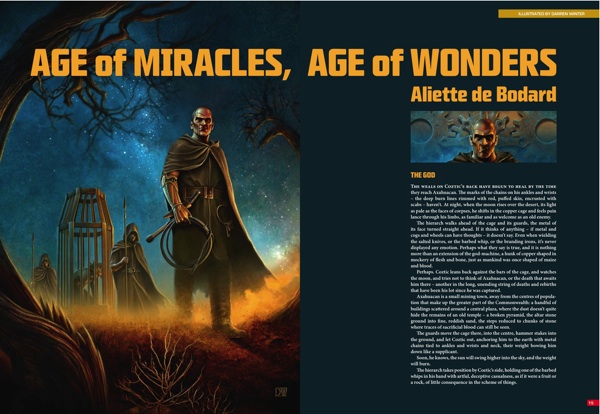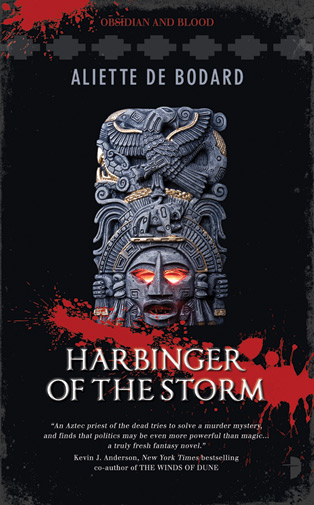Common misconceptions about the Aztecs
It occurred to me I did this kind of post for Ancient China, but never got around to it for the Aztecs…
–The jungle. Ok, if I had a cookie every time the romantic and torrid jungle atmosphere was mentioned in connection with the Aztecs, my kitchen would be overflowing. The Aztecs were a people of Central Mexico, with NO jungles whatsoever in a radius of several dozen kilometers. Their country was wet marshes; and after the wet marshes, high mountains with dry and cold weather. To get the jungle, you had to go down to the south–a week’s march or more, beyond the boundaries of the empire for most of its existence–, and enter the bits that are now the South of Mexico and Guatemala. Those are Maya lands (see below for Aztecs, Mayas and Incas). There is a lot of jungle-based imagery in Aztec mythology (jaguars and quetzals, for instace), precisely because those jungles were far-off lands the Aztecs didn’t see every day and thus acquired an aura of magic and preciousness, a bit like the Orient in the 19th Century became this glamorous place where everything was larger than life.
And Apocalypto is a terrible movie about Mesoamerican people, incidentally (it depicts life among the Maya, but does a terrible job of it).
–Aztecs, Mayas, Incas, it’s all the same, isn’t it? Er, yeah, sure. Just as the Finns, the Spanish and the Ancient Greek are secretly all one people. The Aztecs, as said above, occupied the centre of Mexico from the 14th to the 16th Century; the Mayas held the South of Mexico, Guatemala, Honduras, etc., for a longer time than this (the last Maya city fell in the 17th or 18th Century, and the Mayas had been around for a while, even though their culture had changed a lot by then). The Incas were in Peru, which is more than three thousand kilometers from any of the aforementioned countries.
–The Empire: or lack thereof. You often find references to the “Aztec Empire”, which immediately evokes a political structure akin to the Roman Empire, ie a unified territory under the rule of a centralised administration. Truth is, the Aztecs were nowhere as organised. The word “hegemony” would be a better description of how they ruled: strictly speaking, they had under political control only a very small bit (the centre around their capital Tenochtitlan). When they conquered a new city-state, they didn’t integrate it by modifying the power structure: they tended to keep the ruling family in place, and force them to pay tribute to Tenochtitlan. And that was pretty much it. There was no attempt at political, territorial or even cultural homogenisation: the Aztecs spread by extending their tribute area, and you didn’t have an empire so much as a collection of loose city states owing a very loose form of allegiance to Tenochtitlan. (the Incas, on the other hand, were very good at the Empire business, sometimes relocating entire populations in order to make sure the political cohesion was preserved). It’s part of the reason the Aztecs fell so quickly: their hold was so tenuous (but still grudgingly felt, considering their demands for exorbitant tribute), that the Spanish had no trouble convincing the rulers of the neighbouring city-states to support them instead of the Aztecs.
–All bloodthirsty savages, I tell you: not going to linger on that one because I’ve harped on it enough, but of course not true. Human sacrifice is a bit of an arresting custom, which means that any other achievements tend to get lost under the weight of disapproval. The Aztecs were awesome astronomers, pretty good physicians for a medieval time period, and they also had a pretty equalitarian society (again, for the time period), with possibilities for commoners to reach pretty high on the social ladder, and a fair amount of women’s rights (right to divorce and inherit, for instance) that most medieval societies tended to forget altogether.
–We’re very well informed about what the Aztecs were like: ha. Mostly, not that much. The conquistadores did a terrific job of destroying the Aztec culture as they found it: there are Aztec descendants, and a handful of codices, but the evidence of how the Aztecs lived is terribly thin. As far as monuments go, again, there are very few Aztec monuments left: the shiny pyramids everyone thinks of when the Aztecs are mentioned tend to be those of Teotihuacan (which predates the Aztecs by 5 centuries or more), and of course Mexico City was built on the ruins of Tenochtitlan, which means very few remains of the Aztec capital.


